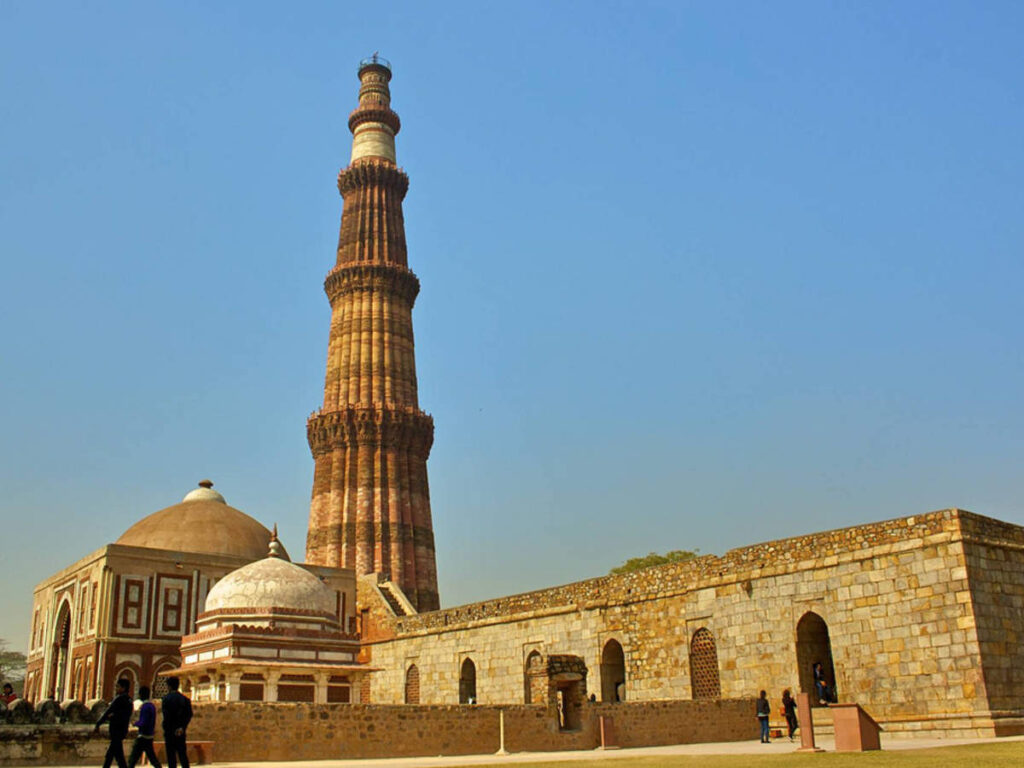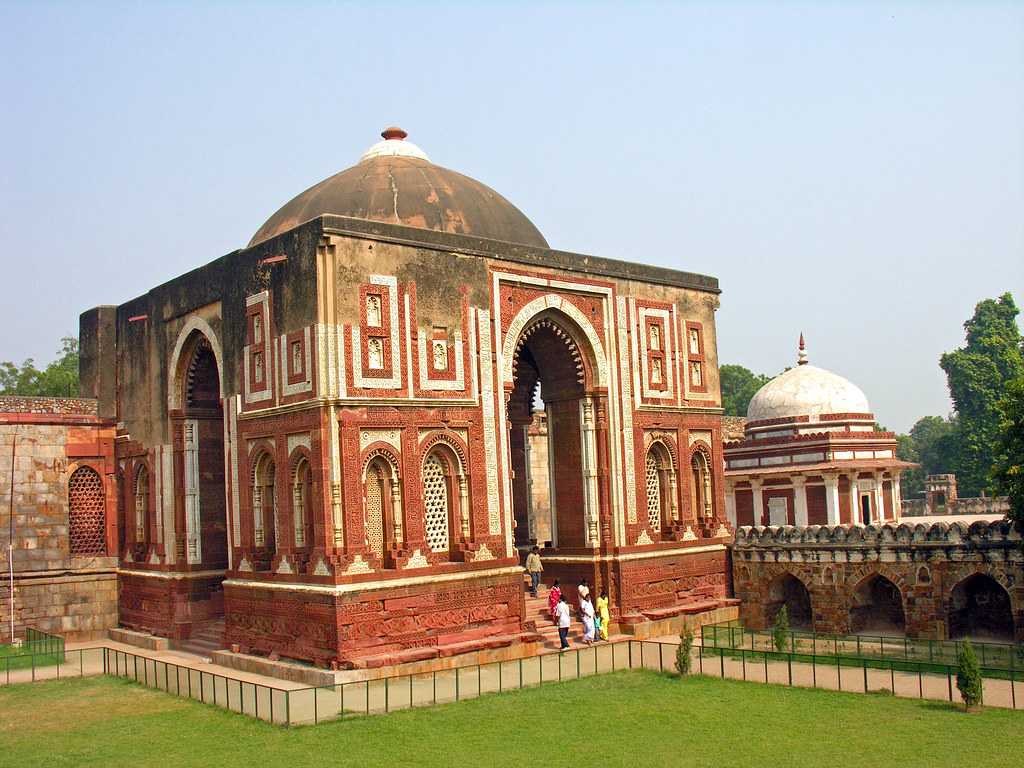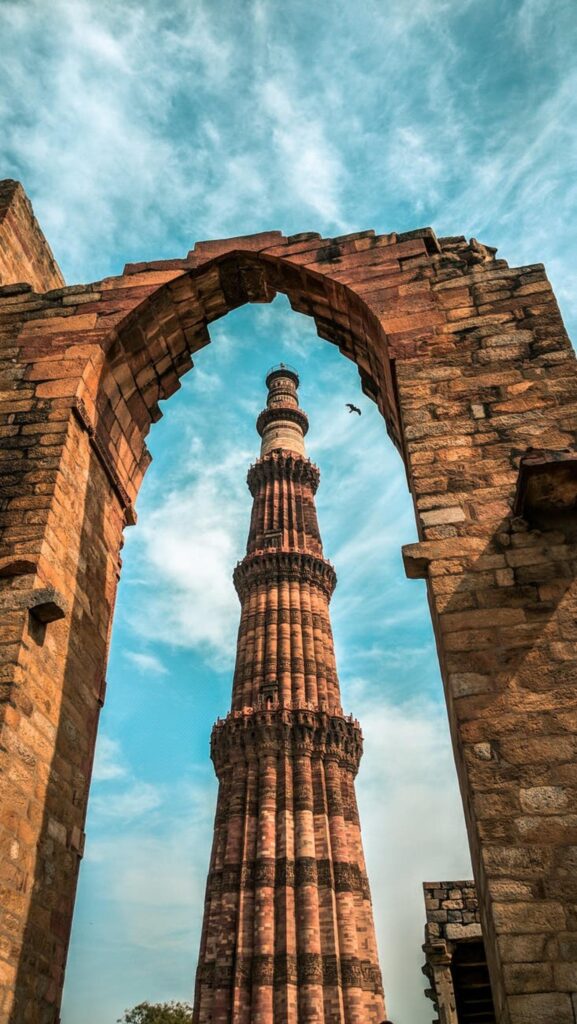A visit to the capital Delhi is incomplete without visiting some of its most iconic monuments, including the Qutub Minar. It is a historical tower that can be found in the Mehrauli area of Delhi and is considered to be one of the most notable, important, and important structures of Indian architecture and history.
Qutub Minar is made of exquisite marble and sandstone. The tower is 73 meters tall and is 47 feet in diameter at the base, which, like a cone shape, forms its taping structure. To reach the top of the tower, the 5 stories of the tower are carved with intricate sculpture which is 9 feet in diameter. The construction of this tower was in the year 1199 AD. It started in the year 1369 AD. To date, making it is one of the oldest permanent structures in Delhi.
Due to its huge historical significance, UNESCO declared it a World Heritage Site. There is also a spiral staircase with 379 stairs leading from the top end of the tower to the base. This lofty and magnificent tower attracts thousands of tourists throughout the year, who come from all parts of the country and even international countries to visit the Qutub Minar. Another interesting aspect of the Qutub Minar is the general appearance of the tower.
The influence of all the different emperors and rulers who played a role in the construction of the tower can be clearly seen on the tower as its various colors, shapes, inscriptions, and engraving techniques. While the lower half of the tower is made of red sandstone, some parts of the Qutub Minar are made of white marble and yellow sandstone. From some angles, the tower also appears tilted, which historians believe may be due to the craftsmanship of different centuries. Qutub Minar has also survived various earthquakes in Delhi throughout history, making it one of the most attractive attractions of the city.
Location: Mehrauli, New Delhi, Delhi, 110030
Price: To tour this heritage site, the Indian citizens need to pay a charge of INR 10, while foreign nationals have to pay INR 250 to enter.
Timing: Monday to Sunday (7:00 am – 5:00 pm)
Qutub Minar | History
The construction of Qutub Minar started in the year 1199 during the reign of Qutubuddin Aibak, the founder of the Delhi Sultanate. However, only the first reservoir of the minaret was completed during his lifetime. Later in 1220, Qutubuddin Aibak’s son-in-law Shamshuddin Iltutmish added 3 more stores to the Qutub Minar.
In 1369, the upper part of the tower was destroyed by lightning. This part was rebuilt in 1505 by Feroz Shah Tughlaq. He also added another storey when renovating the tower. The entrance gate was built by Sher Shah Suri. Later, two major earthquakes in Delhi destroyed most of the tower. It was first built by Alexander Lodhi and once again by Major Robert Smith of the British Army, who eventually repaired the sixth and final reserves in 1828.
The architecture
The Qutub Minar is the best example of Indo-Islamic architecture, one of the most distinctive architectural styles in Indian history. The magnificent pillar stands tall with a broad circular base of 14.3 feet with a total height of 240 feet, which gradually tapers to the top, which has a base of 2.7 meters. The tower is built with the finest quality marble and exquisite red sandstone.
A magnificent spiral staircase leads to the top of the wind tower and consists of 379 steps. Qutub Minar has 5 storeys and each storey has a circular balcony decorated with intricate architectural designs. All five balconies are supported by corbels, which are small wooden or stone structures that provide support to a suspended structure, in this case, the balconies of the Qutub Minar. However, the most attractive feature of Qutub Minar is probably the fact that so many different rules and emperors participated in the construction of the tower.
They all did so with their own unique choice and used their choice of building materials and styles, which led to the creation of a multicultural architectural monument. The base and the first three storeys are constructed of red sandstone and hence a shade of red is seen. The fourth storey is made of ancient white marble and the last part is made of sandstone. The walls of the minaret are inscribed with poetic verses from the Holy Quran. Parsi-Arabic inscriptions can also be engraved on the inner walls of the Qutub Minar.
Qutub Minar | How to Reach
The easiest and fastest way to travel from Delhi’s Indira Gandhi International Airport to Qutub Minar is by taxi from Terminal 2 of the airport. However, it can be expensive, and if you are looking for cheap options, you can choose to travel by subway.
From the airport, you can take the metro to New Delhi and from there to Qutub Minar. The cheapest way to travel from the airport to the minaret is a bus, which will drop you off after about a 1-hour ride directly in front of the Qutub Minar.
Qutub Minar | What Not to Miss
Qutub Minar Despite being one of the most famous historical attractions in the city, there are many exciting places to visit around the Qutub Minar as well. Here are some places you can go.
The Iron Pillar of Delhi – The Iron Pillar of Delhi is not only a wonderful historical monument but also a scientific anomaly, which has made researchers, experts, and citizens fearful and bamboo for centuries. The pillar was constructed between the third and fourth centuries during the reign of Chandragupta II. It is 7 meters tall and is popularly known as the Kirti Stambh — which is dedicated as a banner to the “Dhwaja” or Hindu god, Vishnu. The most interesting feature of the pillar is that it is not rusted, despite being built with iron many centuries ago, because iron is considered iron when exposed to oxygen.
Alai Minar – Alai Minar is an incomplete historical structure that can be found in the same complex as Qutub Minar. The construction of this tower was started by Alauddin Khilji but remained incomplete due to his death in 1316. Alauddin Khilji was a mighty ruler, and he wanted to build a tower twice the size of Qutub Minar. However, this ambition was not fulfilled and construction ended with his demise. Today the Alai Minar is situated at an altitude of 24.5 meters, with the first floor constructed only of red sandstone.
Iltutmish’s Tomb – Iltutmish was the third of the Mamluk kings. His mausoleum was built in the year 1235 and is situated in the same complex in the north-eastern part of Qutub Minar. It is a beautiful structure with three marble prayers. The middle of the structure is higher than the other two pillars which gives an interesting architectural beauty. The mausoleum was built by his successor Qutubuddin Aibak, the founder of the Delhi Sultanate and the ruler after whom the Qutub Minar was named.
Quwwat-ul-Islam Mosque – Quwwat-ul-Islam Mosque was also built by Qutubuddin Aibak. The monument is said to have been constructed by the king using the relics which destroyed Jain and Hindu temples. The Quwwat-ul-Islam Mosque is special because it is called the first mosque built in Delhi. It is built with white marble, gray quartz, and red sandstone.
Zafar Mahal – The Zafar Mahal in the Qutub Complex is important because it is said that the last monument built by the Mughal ruler was overthrown by the British Empire. The interiors of this historic site were partly constructed by the Mughal Emperor – Akbar Shah II and later the construction and construction of the gate was completed by Bahadur Shah Zafar II.
Begampuri Mosque – The famous Begumpuri Mosque was constructed in the 14th century during the reign of Feroz Shah Tughlaq. It is one of the seven most important monuments built by the emperor and the largest among them. The mosque was constructed with mortar and gray quartzite and was later plastered with lime. It is located near the Aurobindo Ashram.
Related Article –












